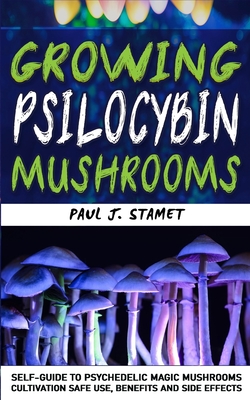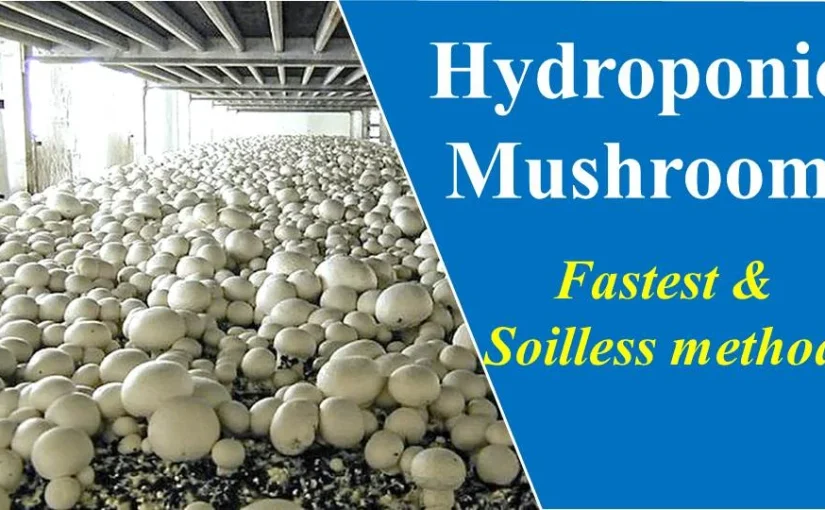Hydroponic mushroom cultivation offers higher yields and faster growth. Compared to traditional methods, it also uses less water and space.
Hydroponic systems allow mushrooms to grow in a controlled environment, ensuring optimal conditions for each growth stage. This method reduces the risk of pests and diseases, leading to healthier crops. It is an eco-friendly alternative that conserves water and requires less land.
Urban farmers find it particularly beneficial, as it can be set up in small spaces like rooftops or basements. Hydroponic cultivation also provides consistent year-round production, efficiently meeting market demands. With these advantages, hydroponic mushroom farming is gaining popularity among modern agricultural enthusiasts.
Introduction To Hydroponic Mushroom Cultivation
Hydroponic mushroom cultivation is gaining popularity. It offers numerous benefits. Mushrooms grown hydroponically are healthier and more sustainable. This method uses water instead of soil. Let’s explore the basics and history of mushroom farming.
What Is Hydroponic Cultivation?
Hydroponic cultivation is a method of growing plants without soil. Instead, plants grow in a nutrient-rich water solution. This technique is ideal for growing mushrooms, as it ensures controlled growth and better yields.
Hydroponic systems use water, light, and nutrients to create an optimal environment for mushrooms. This method reduces the risk of pests and diseases and saves water compared to traditional farming.
Brief History Of Mushroom Farming
Mushroom farming dates back hundreds of years. Ancient cultures valued mushrooms for their taste and health benefits—traditional methods involved growing mushrooms on logs or in soil.
In recent decades, modern techniques have emerged, including hydroponic systems. These systems offer a more controlled and efficient way to grow mushrooms, revolutionizing mushroom farming.
Hydroponic mushroom cultivation is now a leading method. It provides higher yields and better quality mushrooms and continues to evolve and improve.
Advantages Over Traditional Methods
Hydroponic mushroom cultivation offers several benefits over traditional methods. These benefits make the process more efficient and sustainable.
Let’s explore some key advantages.
Reduced Need For Soil
Traditional mushroom farming requires a lot of soil. Hydroponic methods eliminate this need. Instead, mushrooms grow in a nutrient-rich water solution. This method reduces the need for large plots of land. It also decreases the risk of soil-borne diseases.
| Traditional Methods | Hydroponic Methods |
|---|---|
| Requires soil | No soil needed |
| Risk of soil diseases | Lower risk of diseases |
| More land required | Less land required |
Lower Water Usage
Hydroponic systems use less water than traditional farming. The water used is recycled within the system. This makes it an eco-friendly option. Lower water usage also means reduced costs for growers.
-
- Water is recycled
- Uses less water overall
- Eco-friendly
- Reduces costs
Hydroponic mushroom cultivation is a smart, sustainable choice. These methods save resources and promote healthy growth. They offer clear advantages over traditional farming methods.
Economic Benefits
Hydroponic mushroom cultivation offers numerous economic advantages. It reduces costs, increases yield, and boosts profits. This method is efficient and sustainable. Let’s explore the economic benefits in detail.
Cost Efficiency
Hydroponic systems can save money on resources. They use less water compared to traditional farming. Water recycling systems reduce waste. This approach also cuts down on the need for soil. Soil can be expensive and hard to manage. With hydroponics, you avoid these costs.
Labor costs are also lower. Automated systems handle many tasks. This reduces the need for manual labor. Fewer workers mean lower wages and benefits. The initial setup cost may be high, but long-term savings are significant.
| Traditional Farming | Hydroponic Farming |
|---|---|
| High water usage | Low water usage |
| Expensive soil needed | No soil required |
| High labor costs | Lower labor costs |
Higher Yield And Profit
Hydroponic systems can produce more mushrooms. They grow faster and healthier. This leads to a higher yield. More mushrooms mean more profit. The quality of hydroponic mushrooms is also better. Healthy mushrooms sell for a higher price.
The controlled environment allows for year-round cultivation, ensuring a steady supply of mushrooms. Consistent production meets market demands and helps maintain stable prices. Farmers can plan better and earn more throughout the year.
-
- Faster growth rate
- Higher quality mushrooms
- Year-round cultivation
- Stable market prices
Hydroponic mushroom cultivation offers clear economic benefits. It reduces costs and increases yield. This makes it a smart choice for farmers.
Environmental Impact
Hydroponic mushroom cultivation has a positive environmental impact. This method helps conserve resources and reduces pollution. Here, we explore its benefits under two key aspects.
Sustainable Farming Practices
Hydroponic mushroom farming uses less water and land, which means it is more efficient. Traditional farming consumes a lot of water and space. Hydroponics, on the other hand, recycles water, ensuring minimal wastage.
Moreover, hydroponic systems need less space. Farmers can grow mushrooms vertically, saving land and allowing urban farming. This reduces the need to clear forests for farmland.
Here’s a comparison of resource use:
| Resource | Traditional Farming | Hydroponic Farming |
|---|---|---|
| Water | High | Low |
| Land | High | Low |
Reduction In Pesticide Use
Hydroponic mushroom farming reduces pesticide use. Traditional farming often needs pesticides, which harm the environment and health. Hydroponics grows mushrooms in controlled environments, reducing the risk of pests.
Natural pest control methods can be used in hydroponics, including introducing beneficial insects. As a result, there is less chemical runoff into water bodies.
Here are the benefits of reduced pesticide use:
-
- Healthier mushrooms
- Cleaner water sources
- Safer environment for all
Health Benefits
Hydroponic mushroom cultivation provides many health benefits. Growing mushrooms hydroponically ensures cleaner and more nutritious produce.
Nutrient-rich Mushrooms
Hydroponic mushrooms are rich in essential nutrients. They contain vitamins, minerals, and antioxidants.
- Vitamins: Hydroponic mushrooms are high in vitamin D, B vitamins, and vitamin C.
- Minerals: They provide important minerals like potassium, phosphorus, and magnesium.
- Antioxidants: These mushrooms have antioxidants that help fight free radicals.
Including hydroponic mushrooms in your diet can boost your immune system. They also support overall health and well-being.
Organic Growing Conditions
Hydroponic mushrooms are grown in controlled environments. This ensures they are free from pesticides and harmful chemicals.
| Benefit | Details |
|---|---|
| Clean Produce | No soil means fewer contaminants and pathogens. |
| Pure Water | Uses purified water, reducing the risk of pollutants. |
These organic conditions lead to healthier and safer mushrooms. Eating them reduces the intake of harmful substances.
Hydroponic mushroom cultivation brings many health benefits. Nutrient-rich mushrooms and organic growing conditions ensure a healthier diet.
Technological Innovations
Hydroponic mushroom cultivation is revolutionizing agriculture with technological innovations. These advancements improve efficiency, yield, and sustainability. Let’s explore some key innovations in this field.
Automated Systems
Automated systems transform the way mushrooms are grown. These systems control temperature, humidity, and nutrient levels. This ensures optimal growing conditions for mushrooms.
Automated systems reduce manual labor. They also minimize human error. This leads to consistent and high-quality yields.
Here are some key features of automated systems:
-
- Temperature Control: Maintains ideal temperatures for mushroom growth.
- Humidity Regulation: Ensures proper moisture levels.
- Nutrient Delivery: Provides mushrooms with essential nutrients.
Use Of Led Lighting
LED lighting plays a crucial role in hydroponic mushroom cultivation. These lights provide the right spectrum for mushroom growth.
LED lights are energy-efficient and long-lasting. They help reduce electricity costs.
Benefits of using LED lighting include:
-
- Energy Efficiency: Consumes less power than traditional lights.
- Cost-Effective: Lowers electricity bills.
- Enhanced Growth: Provides optimal light spectrum.
| Feature | Benefit |
|---|---|
| Temperature Control | Ensures ideal conditions |
| Humidity Regulation | Maintains proper moisture |
| Nutrient Delivery | Supplies essential nutrients |
Technological innovations are transforming hydroponic mushroom cultivation. Automated systems and LED lighting are leading the charge.
Challenges And Solutions
Hydroponic mushroom cultivation presents unique challenges. There are effective solutions to tackle these challenges. This section explores common issues and their solutions.
Initial Setup Costs
The initial setup for hydroponic mushroom cultivation can be expensive. Essential equipment includes grow lights, nutrient solutions, and growing trays.
Solution: Start with a small-scale setup. Gradually reinvest profits to expand. Look for second-hand equipment in good condition. DIY options can also reduce costs.
Here’s a table to illustrate initial costs and potential savings:
| Item | New Cost | Second-Hand Cost | DIY Cost |
|---|---|---|---|
| Grow Lights | $200 | $100 | $50 |
| Nutrient Solutions | $50 | $25 | $15 |
| Growing Trays | $100 | $50 | $30 |
Knowledge And Expertise
Growing mushrooms hydroponically requires specific knowledge. Understanding the nutrient needs and environmental conditions is crucial.
Solution: Invest time in learning. Read books, watch tutorials, and join forums. Participate in local workshops or online courses. Connect with experienced growers for tips.
Follow these steps to gain expertise:
-
- Read reliable books and articles on hydroponic farming.
- Watch video tutorials from trusted sources.
- Join online forums and communities for growers.
- Attend local workshops and courses.
- Network with experienced growers for practical advice.
Consistent learning and networking help improve your skills.

Credit: www.doylestownbookshop.com
Future Prospects
The future of hydroponic mushroom cultivation looks bright and promising. As technology advances, the methods for growing mushrooms will improve. This will lead to higher yields and better quality. Below, we explore the future prospects in detail.
Growing Popularity
Hydroponic mushroom cultivation is gaining more fans every day. People love fresh, locally grown mushrooms. They also appreciate the environmental benefits. Using less water and no soil is a big plus. In cities, space is limited. Hydroponics fits well in urban areas. This makes it a popular choice.
Potential For Expansion
The potential for expansion in hydroponic mushroom farming is huge. More businesses are entering this field. New technologies are being developed. This helps farmers grow more mushrooms in less space. The market demand for mushrooms is growing. Restaurants and grocery stores want fresh produce. This opens doors for more farmers.
| Factor | Impact |
|---|---|
| Urban Farming | Efficient use of space |
| Water Usage | Less water needed |
| Market Demand | High demand for fresh mushrooms |
In the future, hydroponic mushroom farms could be everywhere. They could be on rooftops, in basements, or even inside shipping containers. This makes it a flexible and viable option for many.

Credit: timesofagriculture.in
Frequently Asked Questions
What Are The Beneficial Fungi In Hydroponics?
Beneficial fungi in hydroponics include mycorrhizae and Trichoderma. Mycorrhizae enhance nutrient absorption and root growth. Trichoderma protects plants from pathogens and promotes healthy root systems.
What Are The Benefits Of A Mushroom Farm?
A mushroom farm provides fresh, organic produce. It offers high profit margins and requires minimal space. Mushrooms grow quickly, ensuring fast returns. They improve soil health and recycle agricultural waste.
Mushroom farming supports sustainable agriculture and meets growing consumer demand for healthy, nutritious food.
What Benefits Would There Be To Growing This Crop Hydroponically?
Growing crops hydroponically increases yield, saves water, and reduces the need for pesticides. It allows year-round production and requires less space.
What Are The Pros And Cons Of Hydroponic Farming?
Hydroponic farming offers faster plant growth, higher yields, and less water usage. It requires high initial costs and constant monitoring.
What Is Hydroponic Mushroom Cultivation?
Hydroponic mushroom cultivation is growing mushrooms without soil, using nutrient-rich water solutions.
Conclusion
Hydroponic mushroom cultivation offers numerous benefits. It is sustainable, space-efficient, and produces high yields. This method requires less water and fewer pesticides. It’s an excellent choice for urban farmers and those with limited space. Embrace hydroponic methods to enjoy fresh, healthy mushrooms year-round.
Experience the future of farming with hydroponic techniques.
